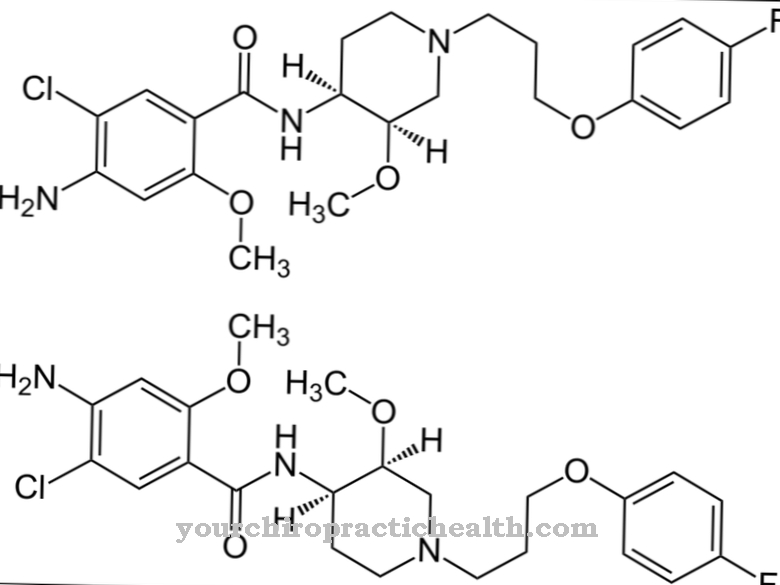Ambroxol belongs to the group of antitussives (cough removers) and is used to combat acute and chronic respiratory and lung diseases that are associated with a disruption of mucus formation and mucus removal. Ambroxol has proven to be a tolerable and extremely effective cough and expectorant. Even acute sore throats can be successfully treated with the local anesthetic effects of Ambroxol.
What is Ambroxol?

Ambroxol the mode of action, liberation for the airways, copied from nature. The leaves of the lungwort (Adhatoda vasica shrub) have been used in cough therapy in Ayurveda, the Indian art of healing, for thousands of years.
The active substance of the plant, the vasicin, was isolated from medical research and significantly improved for ambroxol. Compared to the natural product, it can be dosed more precisely, has a significantly increased effect and is better tolerated.
Ambroxol was launched in Germany in 1979 as Mucosolvan® and has proven to be an effective cough remover. Mucosolvan, along with Ambroxol, is the most widely used cough medicine worldwide.
The active ingredient ambroxol is a drug from the group of so-called mucolytics (drugs that liquefy thick mucus in the airways). Ambroxol is available in various dosage forms such as drops, tablets, sustained-release capsules, effervescent tablets, juice, suppositories or inhalation concentrate.
Pharmacological effect
Respiratory diseases with mucus are always associated with a restriction of breathing. The resulting reduced oxygen supply to the body can promote the causes of infections, narrowing of the airways, destruction of the lung tissue, diseases of the blood vessels in the airway system, allergies or even tumors.
Mucus in the lungs is a good breeding ground for viruses and bacteria. In the case of a viral flu-like effect, viruses are the cause of the disease and whitish mucus is coughed up. In the case of a viral flu infection and the appearance of yellowish-green secretions, bacteria are likely to be the cause of the cough.
If the sputum is bloody, it could e.g. B. be an indication of the onset of pneumonia. In any case, you should seek medical advice immediately.
The pharmacological effect of Ambroxol is particularly suitable here with its expectorant and pain-relieving effect. Ambroxol also has a local anesthetic effect by interrupting the transmission of pain. Ambroxol has therefore also been used as an active ingredient in sore throat tablets for some time.
Medical application & use
The mucous membrane and ciliated epithelium form the cleaning system of the airways, which is crucial for keeping the airways clean from foreign substances.
Ambroxol supports this mucociliary cleaning system, which lines most of the airways by liquefying the mucus and stimulating the cilia in the bronchi to move.
Between the cilia are cells and glands that produce mucus. The bronchial mucus they produce binds harmful foreign substances, which are then transported away from the airways by the cilia. However, if this mucociliary cleaning system of the airways is overloaded, an urge to cough develops.
The bronchial mucus is then coughed up together with the foreign substances or foreign bodies by vigorous coughing. The cough with sputum, so-called productive cough, must be differentiated from the dry, irritating cough, which is caused by chemical irritation of the airways and does not help to clean the airways.
Ambroxol is used successfully for the following diseases: asthma, acute / chronic bronchitis, COPD (chronic obstructive pulmonary disease), colds or cystic fibrosis. Recent studies show that ambroxol is also suitable for containing pneumonia and other inflammatory processes.
You can find your medication here
➔ Medicines against coughs and coldsRisks & side effects
Side effects during treatment with Ambroxol need not necessarily occur, but some are known. Since every person reacts differently to medication, the type and frequency of side effects also differ depending on the drug form (tablet, syringe, ointment) of a medication.
Occasional occurrence of gastrointestinal complaints has been observed with Ambroxol administration, and occasional abdominal pain and diarrhea can also occur. Fever and allergic reactions such as shortness of breath, urticaria with itching or facial swelling are possible in rare cases.
Less common side effects:
Dryness of the mouth and upper airways, increased salivation, increased runny nose, constipation or difficulty urinating.
Very rare side effects: allergic shock (anaphylactic shock)
Contraindications:
Ambroxol should not be taken if you are hypersensitive to ambroxol or any of its other ingredients, if you have impaired kidney function or severe liver insufficiency, or if you have a stomach or intestinal ulcer. Take special care with Ambroxol during pregnancy and breastfeeding.
Interactions with Ambroxol:
It should not be taken together with a cough suppressant drug (antitussive), as a reduced cough reflex can lead to an increased accumulation of secretions that cannot be coughed up. However, if the use of both drugs is indicated, this therapy should always be accompanied by a doctor.
Ambroxol shows consistently good treatment results. However, if the clinical picture worsens or there is no improvement after 4 to 5 days, a doctor should be consulted.



























